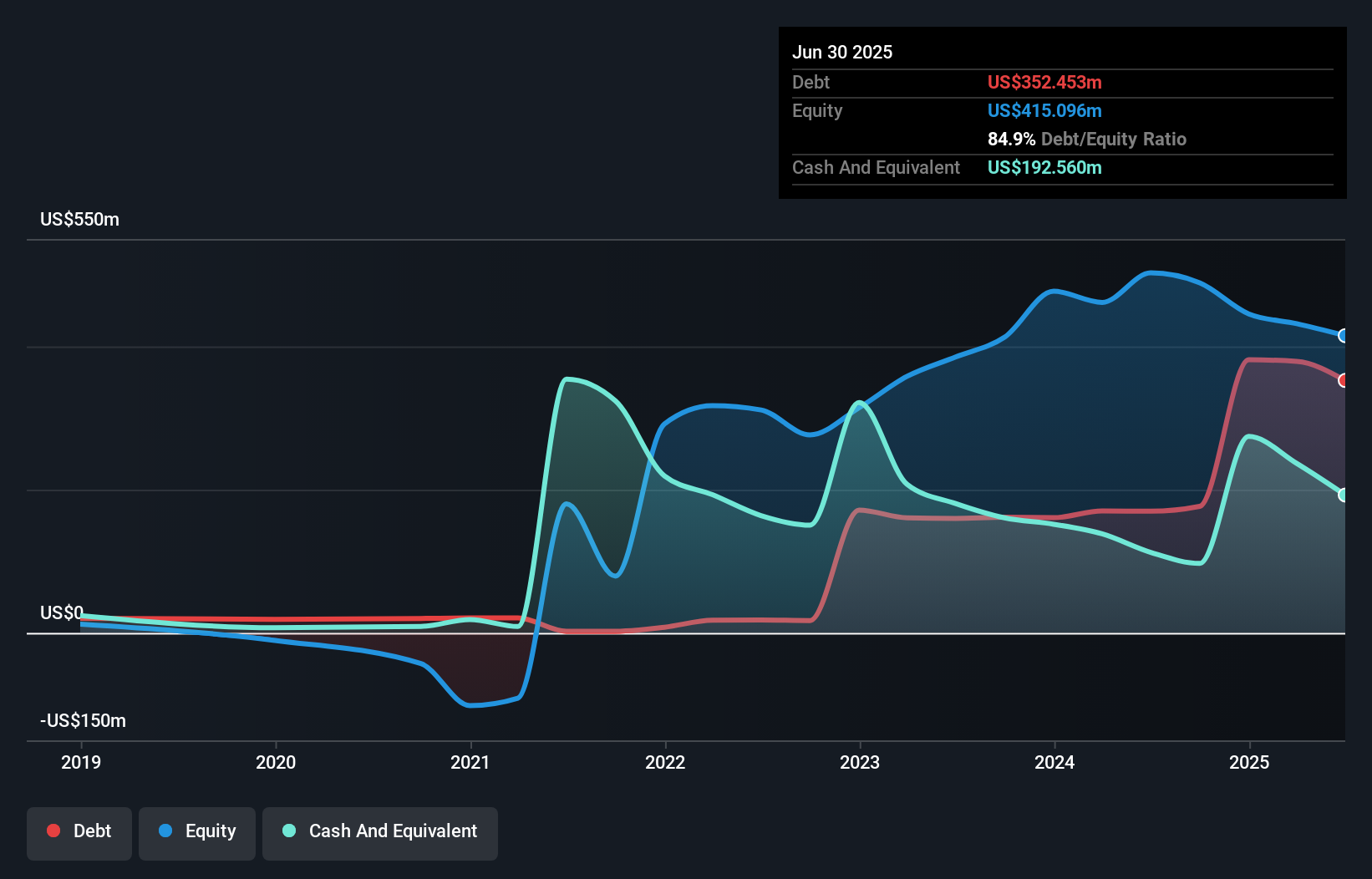- United States
- /
- Semiconductors
- /
- NasdaqCM:INDI
Does indie Semiconductor (NASDAQ:INDI) Have A Healthy Balance Sheet?
The external fund manager backed by Berkshire Hathaway's Charlie Munger, Li Lu, makes no bones about it when he says 'The biggest investment risk is not the volatility of prices, but whether you will suffer a permanent loss of capital.' When we think about how risky a company is, we always like to look at its use of debt, since debt overload can lead to ruin. We note that indie Semiconductor, Inc. (NASDAQ:INDI) does have debt on its balance sheet. But the real question is whether this debt is making the company risky.
What Risk Does Debt Bring?
Debt and other liabilities become risky for a business when it cannot easily fulfill those obligations, either with free cash flow or by raising capital at an attractive price. If things get really bad, the lenders can take control of the business. However, a more common (but still painful) scenario is that it has to raise new equity capital at a low price, thus permanently diluting shareholders. Of course, debt can be an important tool in businesses, particularly capital heavy businesses. The first step when considering a company's debt levels is to consider its cash and debt together.
What Is indie Semiconductor's Debt?
The image below, which you can click on for greater detail, shows that at June 2025 indie Semiconductor had debt of US$352.5m, up from US$169.8m in one year. However, it also had US$192.6m in cash, and so its net debt is US$159.9m.

How Strong Is indie Semiconductor's Balance Sheet?
Zooming in on the latest balance sheet data, we can see that indie Semiconductor had liabilities of US$76.5m due within 12 months and liabilities of US$376.1m due beyond that. Offsetting this, it had US$192.6m in cash and US$69.0m in receivables that were due within 12 months. So it has liabilities totalling US$191.0m more than its cash and near-term receivables, combined.
While this might seem like a lot, it is not so bad since indie Semiconductor has a market capitalization of US$925.2m, and so it could probably strengthen its balance sheet by raising capital if it needed to. But it's clear that we should definitely closely examine whether it can manage its debt without dilution. The balance sheet is clearly the area to focus on when you are analysing debt. But ultimately the future profitability of the business will decide if indie Semiconductor can strengthen its balance sheet over time. So if you want to see what the professionals think, you might find this free report on analyst profit forecasts to be interesting.
See our latest analysis for indie Semiconductor
Over 12 months, indie Semiconductor made a loss at the EBIT level, and saw its revenue drop to US$218m, which is a fall of 7.5%. That's not what we would hope to see.
Caveat Emptor
Over the last twelve months indie Semiconductor produced an earnings before interest and tax (EBIT) loss. Its EBIT loss was a whopping US$153m. When we look at that and recall the liabilities on its balance sheet, relative to cash, it seems unwise to us for the company to have any debt. So we think its balance sheet is a little strained, though not beyond repair. Another cause for caution is that is bled US$85m in negative free cash flow over the last twelve months. So in short it's a really risky stock. There's no doubt that we learn most about debt from the balance sheet. But ultimately, every company can contain risks that exist outside of the balance sheet. For example - indie Semiconductor has 1 warning sign we think you should be aware of.
If, after all that, you're more interested in a fast growing company with a rock-solid balance sheet, then check out our list of net cash growth stocks without delay.
Valuation is complex, but we're here to simplify it.
Discover if indie Semiconductor might be undervalued or overvalued with our detailed analysis, featuring fair value estimates, potential risks, dividends, insider trades, and its financial condition.
Access Free AnalysisHave feedback on this article? Concerned about the content? Get in touch with us directly. Alternatively, email editorial-team (at) simplywallst.com.
This article by Simply Wall St is general in nature. We provide commentary based on historical data and analyst forecasts only using an unbiased methodology and our articles are not intended to be financial advice. It does not constitute a recommendation to buy or sell any stock, and does not take account of your objectives, or your financial situation. We aim to bring you long-term focused analysis driven by fundamental data. Note that our analysis may not factor in the latest price-sensitive company announcements or qualitative material. Simply Wall St has no position in any stocks mentioned.
About NasdaqCM:INDI
indie Semiconductor
Provides automotive semiconductors and software solutions for advanced driver assistance systems, driver automation, in-cabin, connected car, and electrification applications.
Excellent balance sheet and fair value.
Similar Companies
Market Insights
Community Narratives




